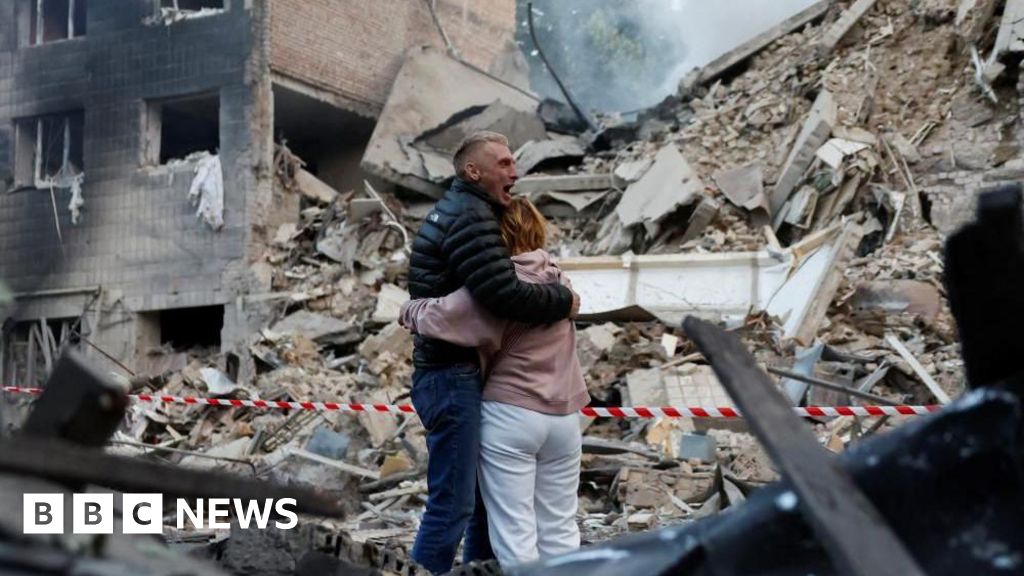
Introduction
A recent BBC article reported a significant escalation in the Russia-Ukraine conflict, claiming that at least 15 people were killed and over 100 injured in a large-scale Russian missile and drone strike on Kyiv. The story has been widely shared, but questions about accuracy and context have surfaced — particularly around the motives behind such strikes and competing claims by Ukraine and Russia. Are these headline-generating attacks strategic military decisions, or are they displays of power meant for public perception? This fact-check cuts through the noise to examine the facts.
Historical Context
Since Russia’s full-scale invasion of Ukraine began in February 2022, both sides have engaged in ongoing strikes, counterstrikes, and a constant war of narratives. Kyiv—Ukraine’s capital—has experienced intermittent but severe air assaults from Russian forces, often aligning with key political or military developments. Drone warfare, use of ballistic missiles, and attempts to degrade infrastructure have become staples of the Russian strategy. Meanwhile, Ukraine has launched counterattacks in both occupied territories and inside Russian borders, seeking to demonstrate resilience and disrupt Russian defenses.
Fact-Check Specific Claims
Claim #1: “Russia has carried out a mass missile and drone attack on Ukraine’s capital, Kyiv, killing at least 15 people and wounding more than 100 others.”
This claim is supported by independent reporting and confirmation from Ukrainian authorities. According to the Kyiv City Military Administration and Ukraine’s Interior Minister Ihor Klymenko, at least 15 deaths were confirmed following the attack. Over 100 people were reportedly injured, with rescue operations hindered by ongoing air sirens. Visual evidence and eyewitness reports also confirm the damage inflicted on multiple residential and civilian targets in Kyiv. Therefore, this claim is accurate and corroborated by nonpartisan sources.
Claim #2: “Russia’s defense ministry said it had targeted Ukraine’s military-industrial complexes and that all its targets had been hit.”
While Russia asserts that its offensives focus solely on military infrastructure, this claim contradicts multiple independent verifications. Analysis by Human Rights Watch and previous assessments by the UN have documented consistent patterns of attacks on civilian buildings, including schools, residential areas, and hospitals. In this particular instance, the destruction of a nine-story apartment building and injury of over 100 civilians indicates civilian areas were heavily impacted. Hence, while Russia may claim it hit only military-industrial targets, there is strong evidence that non-military targets were also struck — showing that the official statement is misleading and omits critical context.
Claim #3: “Russia accused Ukrainian forces of launching a missile strike on a district in occupied Donetsk in eastern Ukraine… at least 10 people had been hurt.”
Russian authorities, including the Russian-appointed Donetsk People’s Republic officials, stated that Ukraine launched missiles on occupied Donetsk, resulting in at least 10 injuries. Ukrainian forces have targeted occupied regions before, often aiming at logistical hubs or military concentrations. However, these claims are difficult to independently verify due to restricted access and the propagandistic nature of information emerging from Russian-controlled territories. While it is plausible that Ukraine targeted military sites in Donetsk, the reported civilian casualties remain unverified. Therefore, we categorize this claim as having insufficient evidence to determine full credibility.
Claim #4: “Russia used cluster bomblets filled with ball bearings to kill as many people as possible.”
This assertion, attributed to Kyiv Mayor Vitali Klitschko, presents a serious accusation. Cluster munitions are banned by over 120 countries due to their indiscriminate impact. Russia has not signed the Convention on Cluster Munitions, and there is documented precedent of Russia using such weapons in Ukraine. Reports from organizations such as Amnesty International and Human Rights Watch have verified previous uses of cluster bombs in urban environments during this war. While forensic analysis of the latest Kyiv attack is ongoing, photographic evidence and witness descriptions support the likelihood of such weapons being used again. This supports the credibility of Klitschko’s claim, although direct confirmation depends on pending on-site assessments.
Conclusion
The BBC article covers a real and verified escalation in the ongoing war, with credible confirmation from Ukrainian authorities that a severe attack on Kyiv occurred, causing extensive civilian casualties and damage. While Russia’s narrative emphasizes strikes on military infrastructure, independent evidence shows significant damage to non-military targets, revealing omission of critical context. Accusations of cluster munitions use align with previously documented Russian tactics. Meanwhile, Russia’s claim about Ukrainian attacks on Donetsk remains inconclusive due to limited verifiable data. Both sides are engaged in information warfare alongside physical warfare, but the facts available strongly support the bulk of the reporting in this article. The article leans slightly toward the Ukrainian narrative, but the documented visuals, governmental sources, and on-the-ground reporting reinforce its credibility.
Take Action Now
Stay informed and equipped to challenge misinformation. Download the DBUNK App to access real-time fact-checks, balanced media insights, and protect yourself from viral falsehoods: Download the DBUNK App




